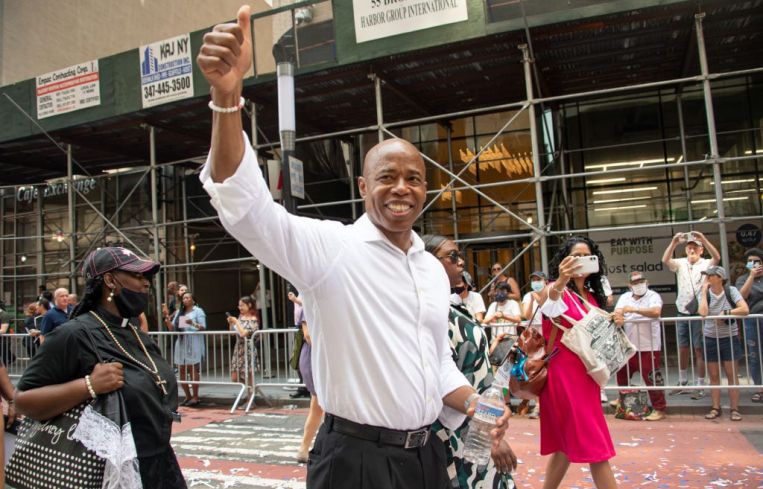Crime, Density and Tax Incentives Should Be Among Mayor Adams’ Top Priorities
By Robert Knakal January 11, 2022 6:21 am
reprints
There is an optimism in New York City that we haven’t felt in a while and one of the reasons for that is our new mayor, Eric Adams. Several people in the New York investment sales market have asked me what my recommendations to Adams would be if I had the chance to speak with him. I actually have had that opportunity and conveyed my thoughts, and am now happy to share them with you.
Crime: The first, and most important, issue that the mayor should focus on is getting crime under control. Getting people back into the office is a key to the recovery of our real estate market both for office properties and retail stores.
The increase in crime across the city, however, is dissuading folks from going back to the office. In particular, riding public transportation is still a concern for many commuters. Given the mayor’s background as a police officer and captain, the expectation is that, unlike our last mayor, he will support the police and the police will respect him. We entered the year with a lot of optimism given the expectation that the relationship between the mayor and the New York Police Department would be greatly improved.
A city in which criminals feel safer than its citizens is not an environment in which a commercial real estate market can or will thrive.

The governor: New York City is the economic engine of New York state. It cannot be overstated that, notwithstanding this reality, it is critically important that the state and the city work cohesively together for the benefit of both. The relationship between our previous mayor and previous governor was adversarial to say the least, which was not in the city’s or the state’s best interest.
Mayor Adams is aware of how important the working relationship is between the mayor and the governor, and I believe he has already shown tangibly that things in this area are, and will be, much better. This will be of significant benefit to New York City and our commercial real estate market.
Residential density: One of the areas in which the city and the state working together can benefit our real estate market would be lifting the 12 floor area ratio cap on residential density. While this will impact New York City much more profoundly than the broader state, the state controls the FAR cap and the state’s cooperation is needed in order to do this. The Department of City Planning has done a great job of increasing residential densities around transportation hubs and decreasing densities far away from public transportation — this trend should, and must, continue.
421a: Whether the program is called 421a, Affordable New York, or something else, the expiration of this critical tax abatement program is looming in June of this year. It must be brought back and the sooner, the better. The realities of building rental housing in the city dictate that a tax abatement is required. In the absence of this program, there would be virtually no rental housing built.
I have often said that the private sector has tremendous dexterity and will do whatever financial incentives direct them to do. Creating tens of thousands, or even hundreds of thousands, of affordable units is easily achievable simply through creating the right incentives for the private sector.
The critical fact for our policymakers to consider is that the city has significant currency in the form of zoning density that doesn’t “cost” anything and can be used to motivate private sector developers. The opportunity exists because, from the city’s perspective, real estate tax revenue per tax parcel is the most important metric. The more tax revenue that can be achieved from every tax lot, the better for the city. From the real estate industry’s perspective, the most important metric relative to real estate taxes is real estate taxes per square foot, not the total tax bill. This relationship between the city’s revenue objectives and the industry’s expense ratio perspective is the key relationship that can drive incentives.
Tangentially, the privatization of many of the New York City Housing Authority’s developments would greatly enhance the quality of life for their tenants and would potentially add to the real estate tax revenue base. It is great to see that there are already steps being made in this direction and this process should continue.
We are greatly optimistic about what Mayor Adams can do for New York and we are here to support him in any way we can.
Robert Knakal is chairman of New York investment sales at JLL.


